Software Product Development: Process, Technologies & Insights
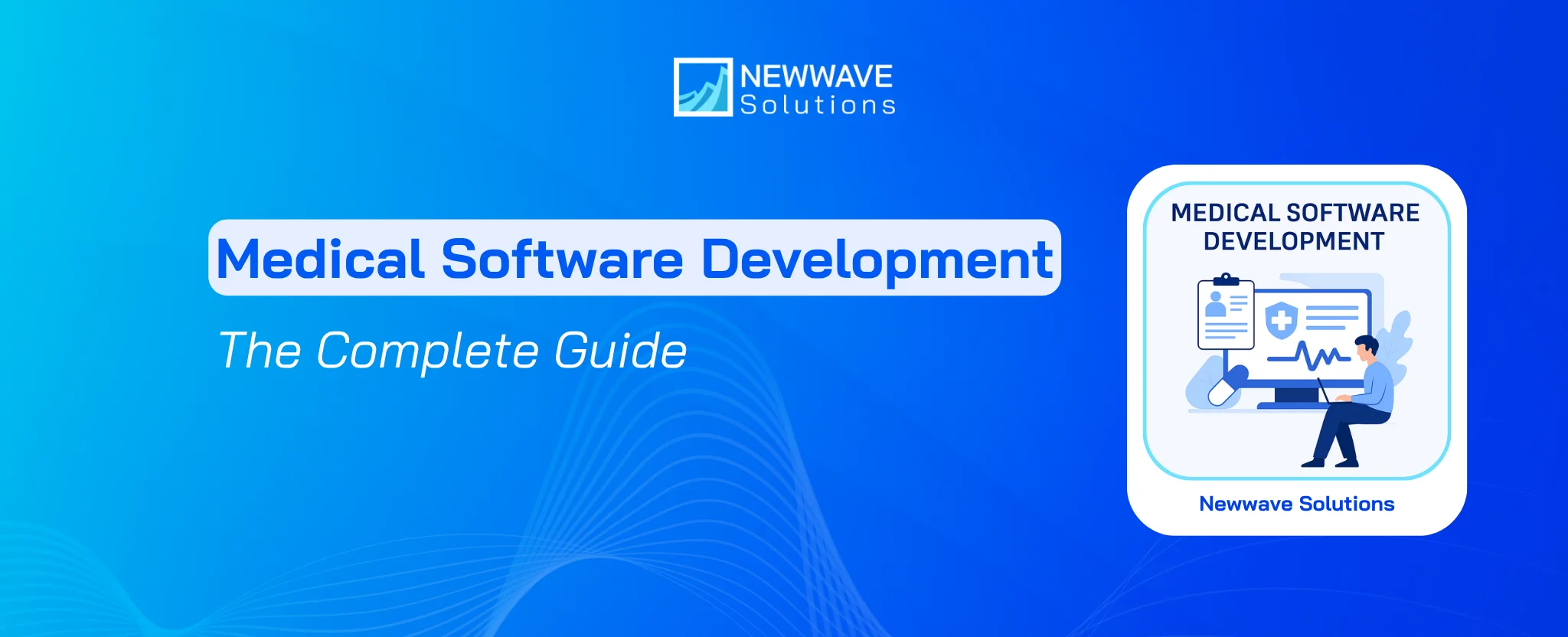
Software products are the backbone of our digital world, from the apps on our phones to the tools businesses rely on. But how do these innovative solutions come to life? This blog post investigates every aspect of software product development, providing a clear understanding of the process and highlighting the valuable services offered by dedicated companies.
1. What is Software Product Development?
Software product development is the process of transforming innovative ideas into practical software solutions that meet specific market demands. It acts as a bridge between creativity and technology, enabling businesses to deliver user-friendly, scalable, and competitive products in the digital era.
Example of Software Product Development
Tesla used software product development to create their vehicle management systems, integrating various digital features to enhance user experience and vehicle performance. Consequently, this development process helped Tesla maintain its competitive edge in the automotive industry.
Meanwhile, Airbnb developed a software product that revolutionized the hospitality industry by connecting travelers with hosts worldwide. This innovation allowed Airbnb to enhance user experience and disrupt traditional accommodation markets effectively.
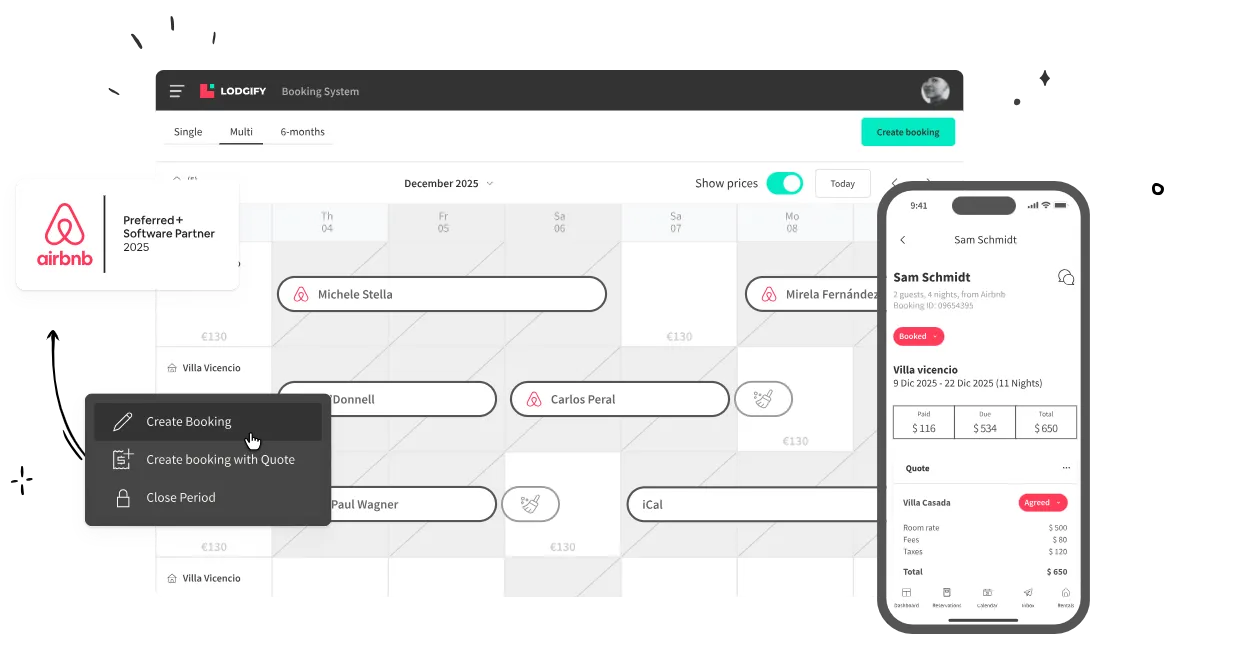
The Software Product Development Life Cycle
Software product development is the heart of bringing innovative software ideas to life. It’s the entire journey, from brainstorming a concept to delivering a polished, user-friendly application that solves a specific problem. Here’s a breakdown of the key aspects of the Software Development Life Cycle (SDLC):
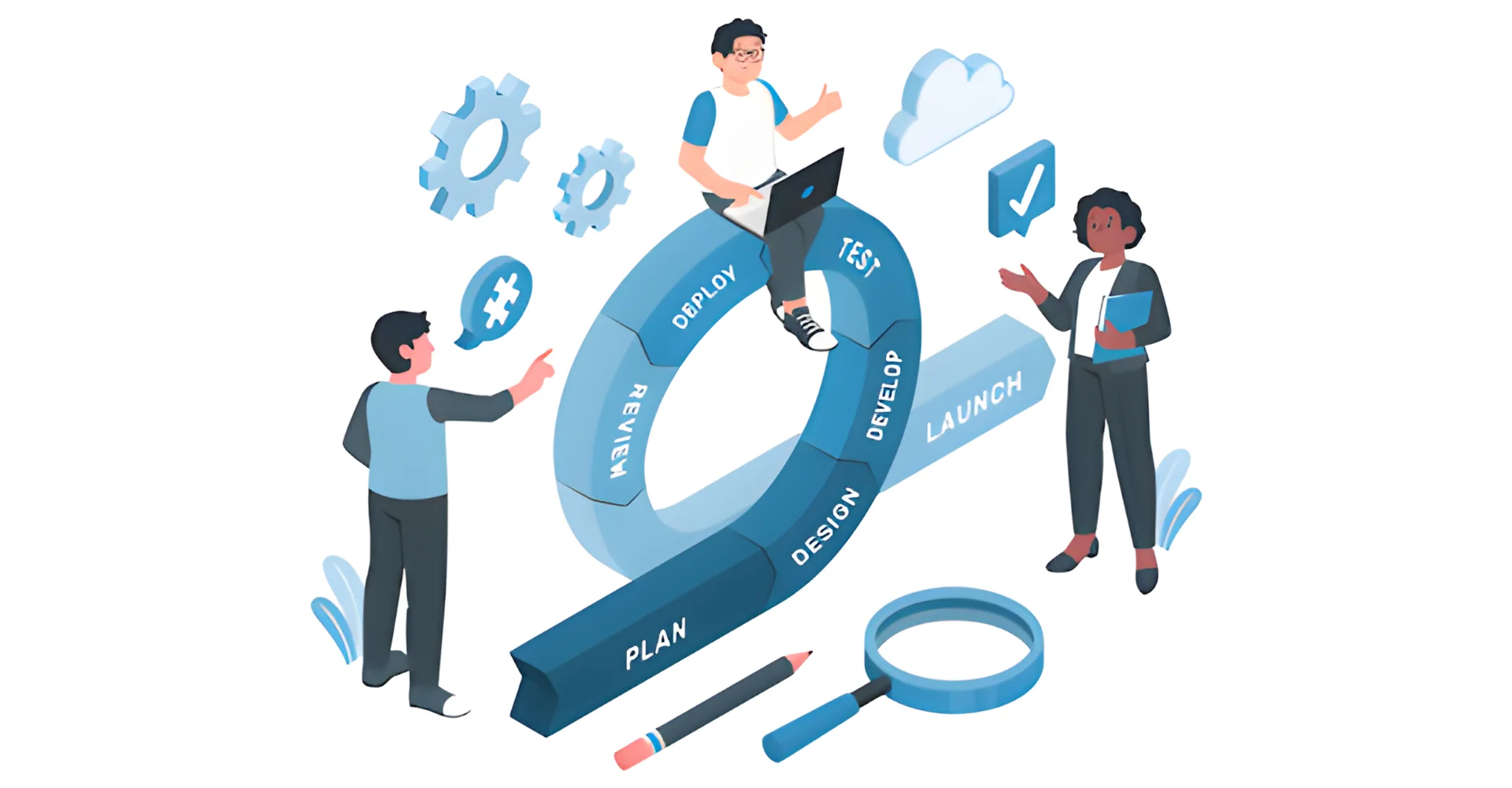
- Ideation and Planning: This initial phase involves identifying a problem or opportunity, defining user needs, and outlining a clear vision for the software product. Think of it as the blueprint stage.
- Development & Design: Here, the software comes to life! Developers write code, designers craft user interfaces, and the core functionalities are built based on the plan.
- Testing & Refinement: Rigorous testing ensures the software functions flawlessly and meets user expectations. This is where bugs are squashed and user feedback is incorporated.
- Deployment & Launch: Time to release your creation to the world! This stage involves deploying the software to the appropriate platform and making it accessible to users.
- Maintenance & Support: The journey doesn’t end at launch! Ongoing maintenance ensures the software remains secure, receives updates, and adapts to evolving user needs.
6 Key Features in Software Product Development
Every software product relies on essential features that determine its functionality and success. Understanding these features helps businesses design products that are user-friendly, reliable, and scalable.
- User-Friendly UI/UX: A user-friendly interface ensures that individuals can navigate applications with clarity and ease. This design approach increases engagement and lowers the learning curve, ultimately enhancing satisfaction and long‑term retention.
- Modular Architecture: A modular architecture divides the system into separate yet interconnected components. This structure simplifies maintenance, accelerates development cycles, and enables teams to update or replace modules without affecting the entire product.
- Scalability: A scalable software product can support growing user activity and expanding data requirements. This flexibility allows businesses to grow confidently without experiencing performance bottlenecks or system instability.
- Performance Monitoring: A performance monitoring system provides visibility into issues such as latency, resource usage, or bottlenecks. This continuous oversight helps teams maintain system reliability and deliver a consistent user experience.
- Analytics: An integrated analytics layer generates insights into user behavior and product performance. These insights empower businesses to refine features, improve decision‑making, and optimise overall product value.
- Security: A strong security framework safeguards sensitive information and ensures compliance with legal regulations. This protection strengthens user trust and improves the product’s credibility in competitive markets.
>>>Read more: What Is Enterprise Software Development & How To Choose The Right Partner
The Role of MVP (Minimum Viable Product) in Software Product Development
Software product development companies are constantly seeking innovative ways to bring their ideas to life. A key concept that has emerged is the Minimum Viable Product (MVP). This approach emphasizes building a basic version of your software with just the core functionalities needed to address user needs.
The concept of a Minimum Viable Product (MVP) is a fundamental principle in software product development that emphasizes delivering a basic version of a product with minimum features to validate assumptions, gather feedback, and iterate based on user responses. The primary goal of an MVP is to test the viability of a product idea with minimal resources and investment.
Here’s why building an MVP is a smart move for any software product development company:
- Faster time-to-market: By prioritizing essential features, you can launch your product quicker, allowing you to capitalize on market opportunities before competitors.
- Validate your idea early: MVPs help you confirm the viability of your product concept and market demand. This reduces the risk of investing heavily in a product that doesn’t meet user needs.
- Save money: Building an MVP is cheaper than a full-featured product. This allows you to use your development resources efficiently and avoid unnecessary spending.
- Continuous improvement: Feedback from MVP users guides iterative improvements, feature enhancements, and product roadmap decisions. This leads to a more user-friendly and successful product in the long run.
- Stand out from the crowd: Launching an MVP can generate early buzz and attract early adopters, giving you a competitive edge and setting the stage for future growth.
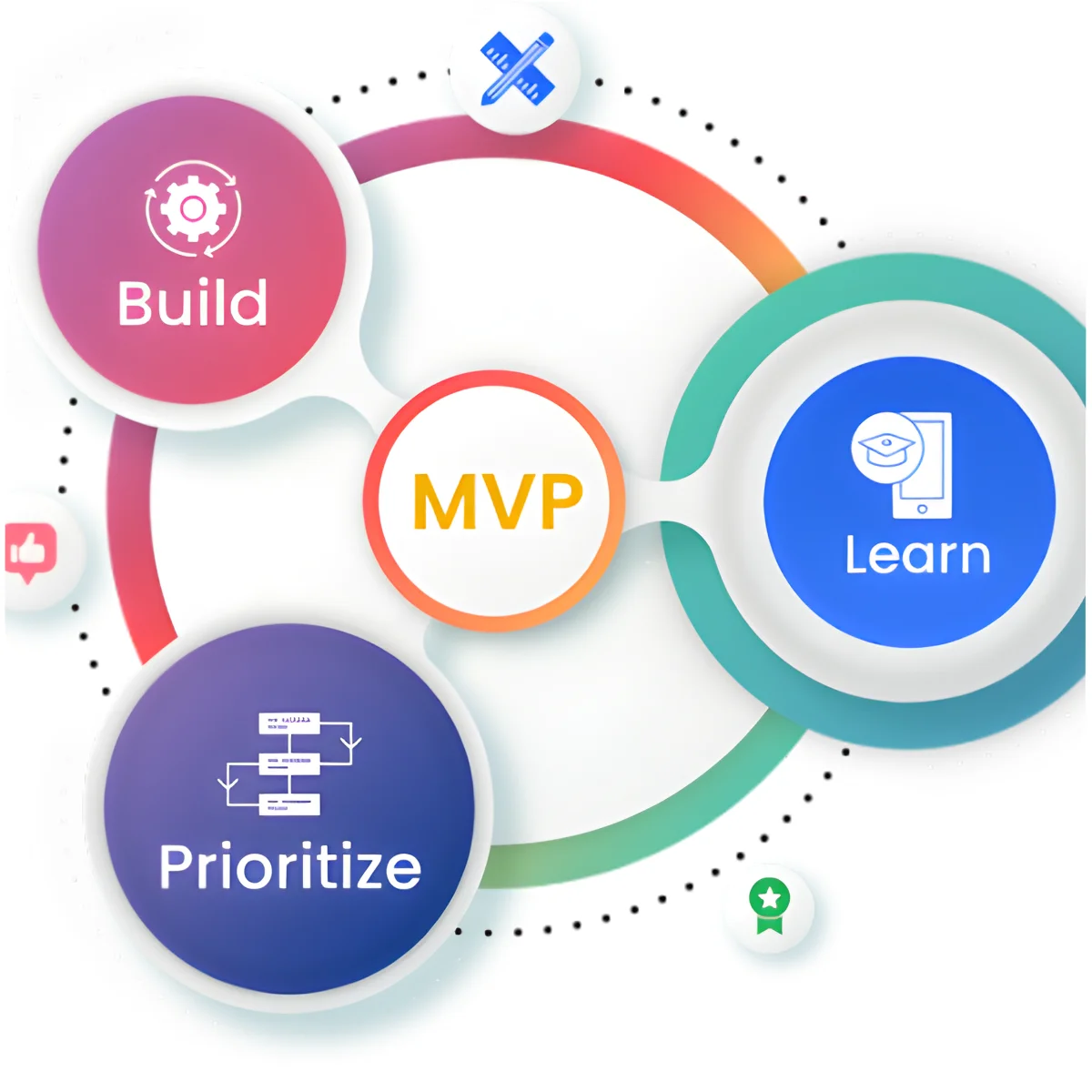
By adopting the MVP approach, software product development teams can streamline innovation, reduce risks, and create software solutions that truly resonate with their target audience. This user-centric development approach leads to successful and sustainable products that meet the evolving needs of the market.
5 Main Stages of the Software Product Development Process
Stage 1: Ideation & Planning
The ideation and planning stage establishes the strategic direction of the entire product lifecycle. This phase identifies the core problems to solve and shapes potential solutions that align with business goals. Furthermore, requirement‑gathering sessions with stakeholders help clarify expectations and prevent misalignment.
In addition, the planning effort produces a detailed product roadmap that outlines timelines, resources, and milestones. This structured approach reduces early‑stage risks and ensures every team member understands the project scope from the beginning.
Stage 2: Design & Prototyping
The design and prototyping stage translates conceptual ideas into tangible visual representations. UX/UI designers create wireframes and interactive mockups that demonstrate user flows and interface behaviour. Moreover, early prototypes enable stakeholders to validate functionality before development begins.
This stage also involves technical architects defining system architecture and integration points for all components. As a result, teams achieve a stronger alignment between technical feasibility and user expectations, reducing costly changes later.

Stage 3: Development & Testing
The development and testing stage serves as the core execution phase of the project. Developers translate design specifications into working software through iterative cycles supported by Agile or Scrum methodologies. Additionally, continuous collaboration between development and QA teams helps maintain alignment with requirements.
Testing activities run in parallel to identify bugs, verify performance, and validate overall system stability. Automated testing tools and continuous integration pipelines further enhance reliability, ensuring that each new feature meets quality standards before moving forward.
Stage 4: Launch & Deployment
The launch and deployment stage prepares the software for real‑world usage. Deployment activities include configuring servers or cloud environments and ensuring smooth accessibility for end‑users. Moreover, comprehensive release planning minimises disruptions during the transition.
Teams also implement rollback strategies, monitoring dashboards, and performance alerts to ensure a stable post‑launch experience. Consequently, the product enters the market with a controlled rollout designed to maximise adoption and mitigate risks.
Stage 5: Maintenance & Iteration
The maintenance and iteration stage ensures long‑term product stability and relevance. Support teams address bugs, release security patches, and optimise performance as user demand increases. Furthermore, ongoing monitoring helps teams respond quickly to emerging issues.
User feedback becomes a key driver for continuous improvement and new feature development. As a result, the product evolves with market needs, maintaining value and delivering sustained business impact over time.

Core Technologies and Tools Used in Software Product Development
Choosing the right technologies and tools is critical to effective software development. These elements shape the product’s quality, performance, and ability to integrate with other systems.
- Programming Languages: Popular languages such as Java, Python, C#, and JavaScript support the creation of robust, high‑performing applications. Each language contributes to different aspects of development, from backend services to interactive user interfaces.
- Databases: Database solutions such as MySQL, PostgreSQL, MongoDB, and Redis store and manage essential application data. The choice of database depends on factors like data structure, scalability needs, and performance requirements.
- Integration Tools: Tools such as MuleSoft, Dell Boomi, and Apache Camel facilitate seamless data exchange between systems. These integrations help organisations unify workflows and maintain consistent operations.
- Emerging Technologies: Technologies including Artificial Intelligence, Machine Learning, cloud infrastructure, and the Internet of Things extend a product’s capabilities. These innovations automate processes, improve predictions, enhance scalability, and connect digital systems with physical devices.
- Frameworks: Frameworks like React, Angular, Django, and .NET promote productivity by providing reusable components and enforcing best practices. These tools help teams build products faster and ensure consistency across the system.
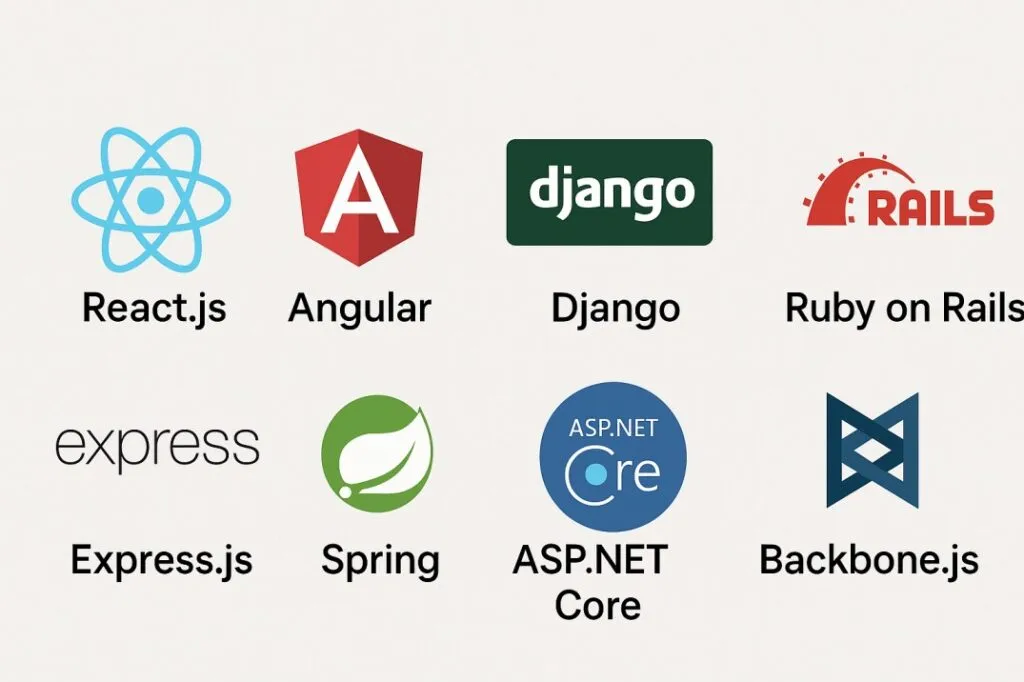
5 Common Challenges in Software Product Development and How to Overcome Them
- Unclear Requirements or Scope Creep: Unclear project requirements or unmanaged scope changes frequently lead to missed deadlines and increased costs. These disruptions weaken product quality, making it essential for businesses to maintain thorough documentation and consistent communication with stakeholders.
- Technical Debt: Technical debt accumulates when rapid fixes or outdated technologies limit future development. This issue increases long‑term maintenance needs and reduces system stability, so businesses should prioritise refactoring and follow strict coding standards.
- User Adoption Issues: A misalignment between product features and user expectations can result in low adoption rates and wasted investment. Early user involvement through feedback sessions and usability testing ensures the product aligns with real user needs.
- Market Fit Uncertainty: Launching a product without validating market demand puts the entire project at risk. Conducting market research and releasing a Minimum Viable Product help teams validate assumptions and reduce commercial uncertainty.
- High Maintenance Cost: Complex architecture and inadequate documentation often lead to high maintenance expenses. Adopting modular design principles and implementing automated testing reduce long‑term maintenance burdens and strengthen product quality.
>>>Read more: What is SaaS Software Development? Benefits, Trends & Insights
Partner with Software Product Development Services
Software product development is the process of transforming innovative ideas into real-world software solutions. But navigating the complexities of development can be daunting. This is where software product development companies come in. These specialized firms act as your one-stop shop, offering a comprehensive suite of software product development services to bring your vision to life.
1. Why You Need a Software Product Development Partner?
Many businesses, from startups to established enterprises outsourced software product development. Here’s why:
- Cost-Effectiveness: Outsourcing can be a budget-friendly option compared to building an in-house team, especially for projects with fluctuating resource requirements.
- Access to a Talent Pool: Software product development companies have a network of skilled professionals with diverse expertise. You gain access to this specialized knowledge without the burden of recruiting and training in-house staff.
- Faster Time to Market: With dedicated development teams and efficient processes, outsourcing can accelerate your product launch, allowing you to capitalize on market opportunities swiftly.
- Scalability and Adaptability: Outsourcing lets you scale your development resources up or down based on project demands, providing greater flexibility and agility.
- Mitigate Risks: Experienced software product development companies have established processes, methodologies, and risk management strategies to minimize potential problems and ensure project success.
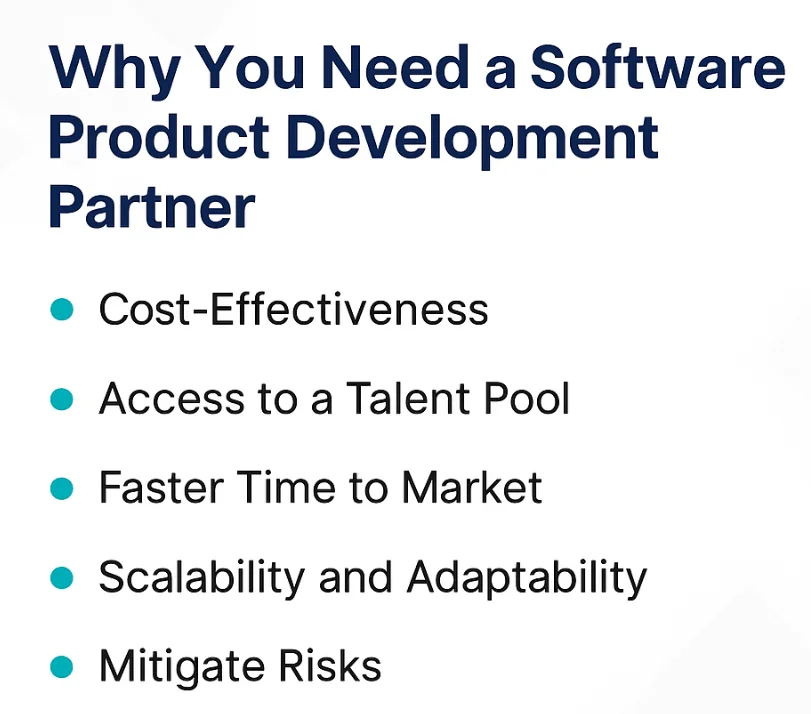
2. Main Roles of a Software Product Development Company
Think of a software product development company as your expert guide throughout the entire development journey. Their team of seasoned professionals, including project managers, developers, designers, testers, and industry specialists, work hand-in-hand with you to:
- Clearly Define Your Needs: They collaborate with you to understand your business goals, gather requirements, and assess the feasibility of your software idea.
- Design for Success: Their experts craft user-friendly interfaces, robust software architecture, and detailed technical specifications that ensure a high-performing product.
- Build and Test Rigorously: They handle the coding, integration, and comprehensive testing of your software, guaranteeing it meets your exact needs and delivers exceptional quality.
- Launch and Maintain Seamlessly: They manage the deployment of your software and provide ongoing support, maintenance, and updates to keep your product running smoothly
Investing in a software product development company empowers you to focus on your core business while experts handle the complexities of software creation. With their expertise, resources, and commitment to quality, they can help you transform your software vision into a successful reality.
3. Newwave Solutions: Your Reliable Software Product Development Partner
If you are looking for a reputable and high-quality Software Product Development Company, Newwave Solutions is an excellent choice for your business. With over 14 years of experience in developing software products and technology solutions, we have supported thousands of enterprises in building their software products, covering the entire process from ideation and concept creation to launching and ongoing maintenance.
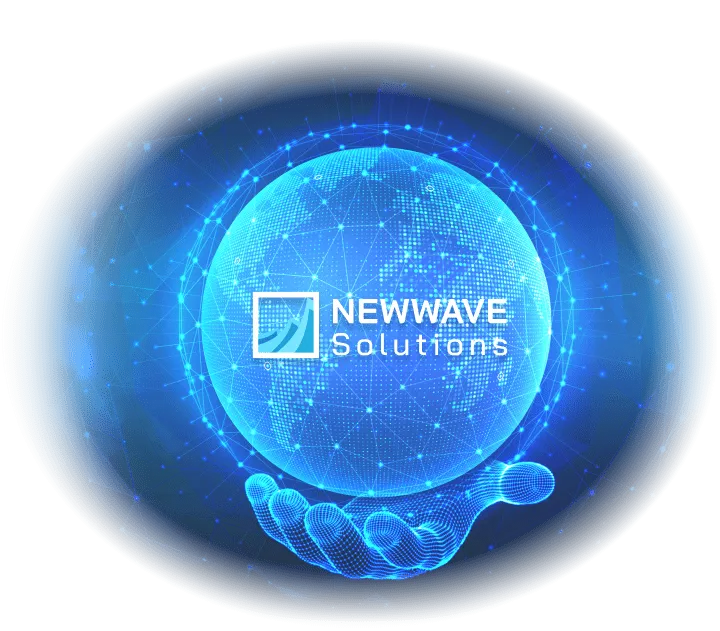
Our advanced technology stack includes:
- ReactJS, Angular, and VueJS, which provide modern frameworks for developing responsive and user-friendly frontends, resulting in excellent user experiences and interface flexibility.
- NodeJS, PHP, Java, .NET, Python, and Ruby on Rails, which serve as reliable backend technologies, ensuring scalable and robust server-side performance for diverse product needs.
- iOS, Android, Flutter, React Native, and Xamarin, all of which empower us to develop native or cross-platform mobile applications with excellent performance and smooth user interfaces.
- AWS, Azure, Google Cloud, Docker, and Kubernetes, which form the cloud and containerization backbone for scalable, secure, and highly available software deployments.
- MySQL, PostgreSQL, MongoDB, and SQL Server, which we employ for managing structured and unstructured data efficiently across products.
- Blockchain, AI/ML, and IoT technologies, which we integrate to enable advanced features such as data security, intelligent analytics, and seamless device connectivity.
Our main service offerings include:
- Product Consulting, where our experts analyze your business goals and technical needs to craft the optimal software product strategy tailored for success.
- Rapid MVP Development, which focuses on building minimum viable products quickly to validate ideas and accelerate time-to-market effectively.
- UI/UX Design, creating intuitive and aesthetically pleasing interfaces that engage users and ensure smooth usability across platforms.
- Custom Development, where our skilled developers build unique software solutions aligned precisely with your specific requirements and business logic.
- Outsourced Development, providing flexible and scalable developer teams who integrate seamlessly with your organization to extend capacity and expertise.
- API & Integration, implementing reliable and secure interfaces that connect your product with third-party services and systems for enhanced functionality.
- QA & Testing, ensuring every aspect of your product, including functionality, security, and performance, meets the highest standards before release.
- Maintenance & Support, delivering ongoing product updates, security patches, and technical assistance to keep your software running smoothly.
- Product Scaling, helping your solution grow to accommodate increasing users and features without compromising quality or performance.
With Newwave Solutions, your software product development journey is managed end-to-end by a trusted partner committed to quality, innovation, and customer satisfaction.
Conclusion
Software product development plays a vital role in driving innovation, efficiency, and competitiveness for businesses across various industries. By following a structured product development life cycle and leveraging the services of specialized software development companies, businesses can create impactful software products that meet user needs and market demands.
The complexities of software development services can be daunting, but you don’t have to go it alone. Newwave Solutions can be your reliable supporter, guiding you through every stage of the process. We offer the expertise, resources, and innovative solutions you need to turn your software vision into reality.
Contact Information:
- Head Office (Hanoi): 1F, 4F, 10F, Mitec Building, Cau Giay Ward, Hanoi City, Vietnam
Branch Office (Tokyo): 1chōme118 Yushima, Bunkyo City, Tokyo 1130034, Japan - Hotline: +84 985310203
- Website: https://newwavesolution.com
- Email: [email protected]
To Quang Duy is the CEO of Newwave Solutions, a leading Vietnamese software company. He is recognized as a standout technology consultant. Connect with him on LinkedIn and Twitter.

Read More Guides
Get stories in your inbox twice a month.
Let’s Connect
Let us know what you need, and out professionals will collaborate with you to find a solution that enables growth.
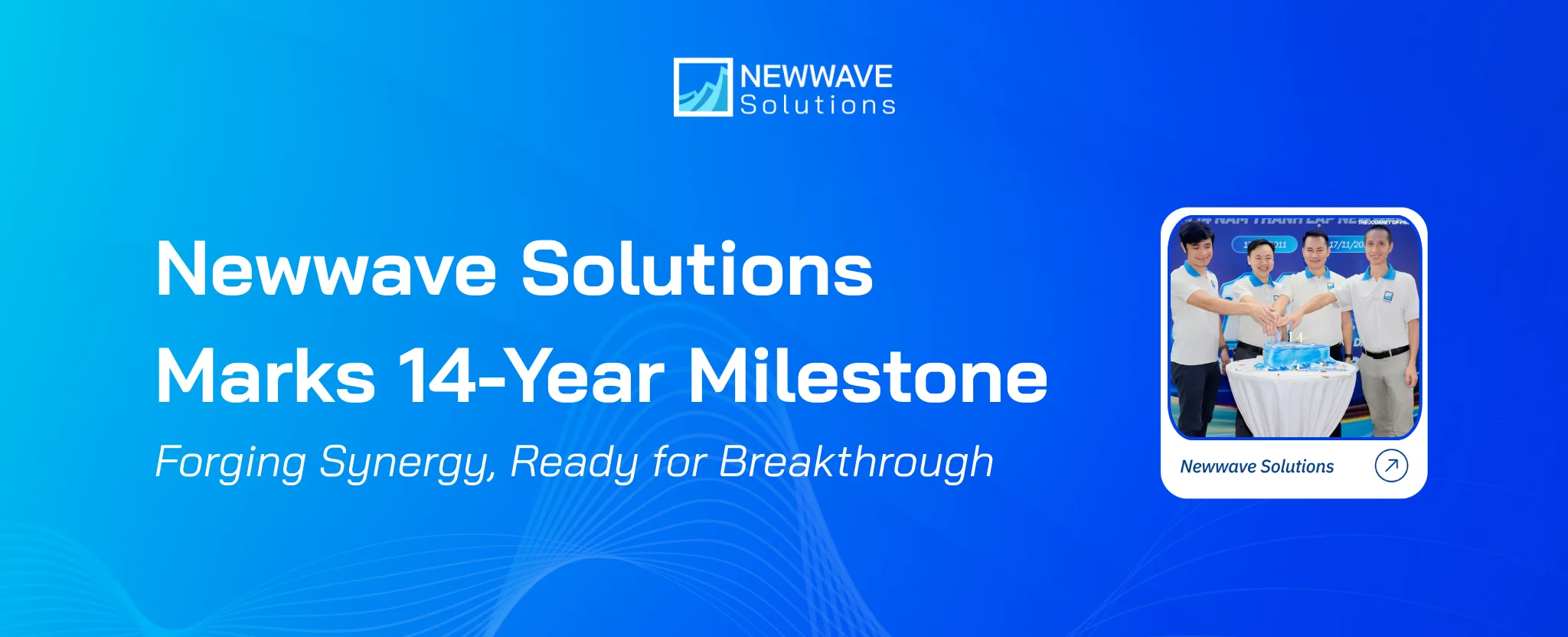

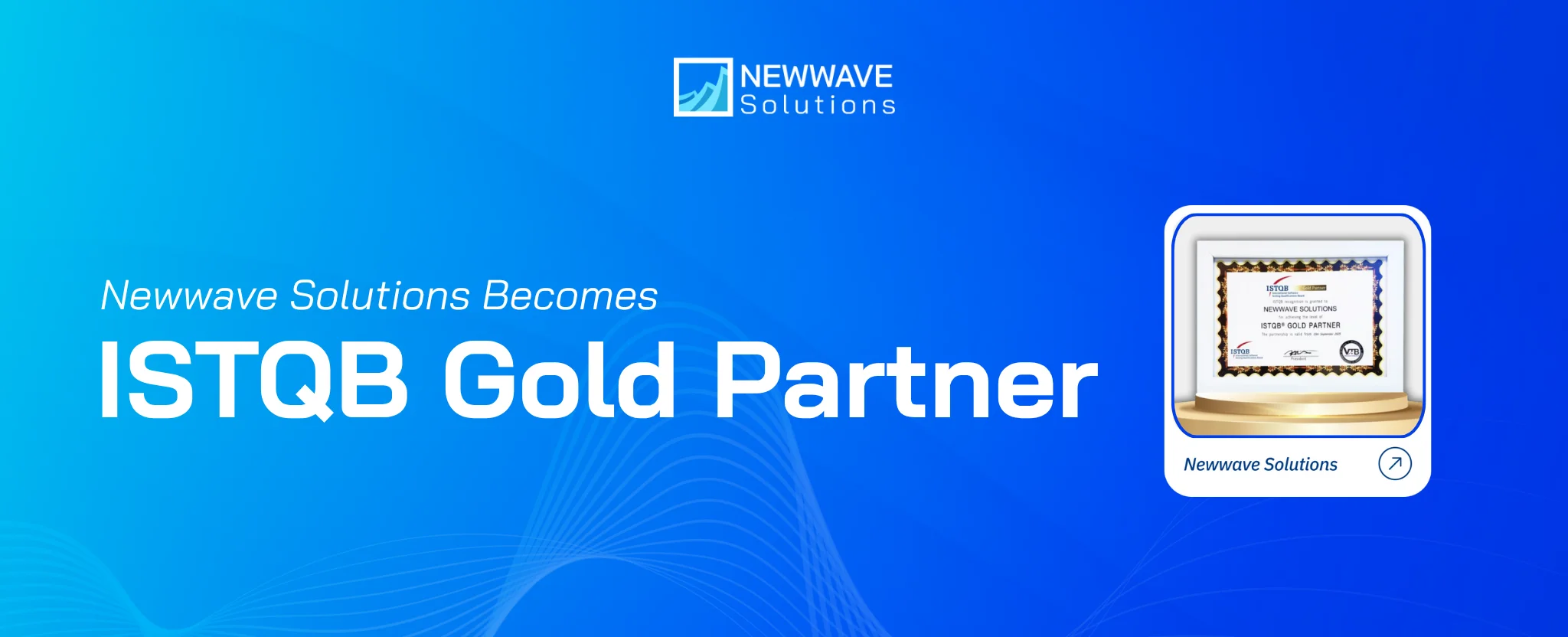
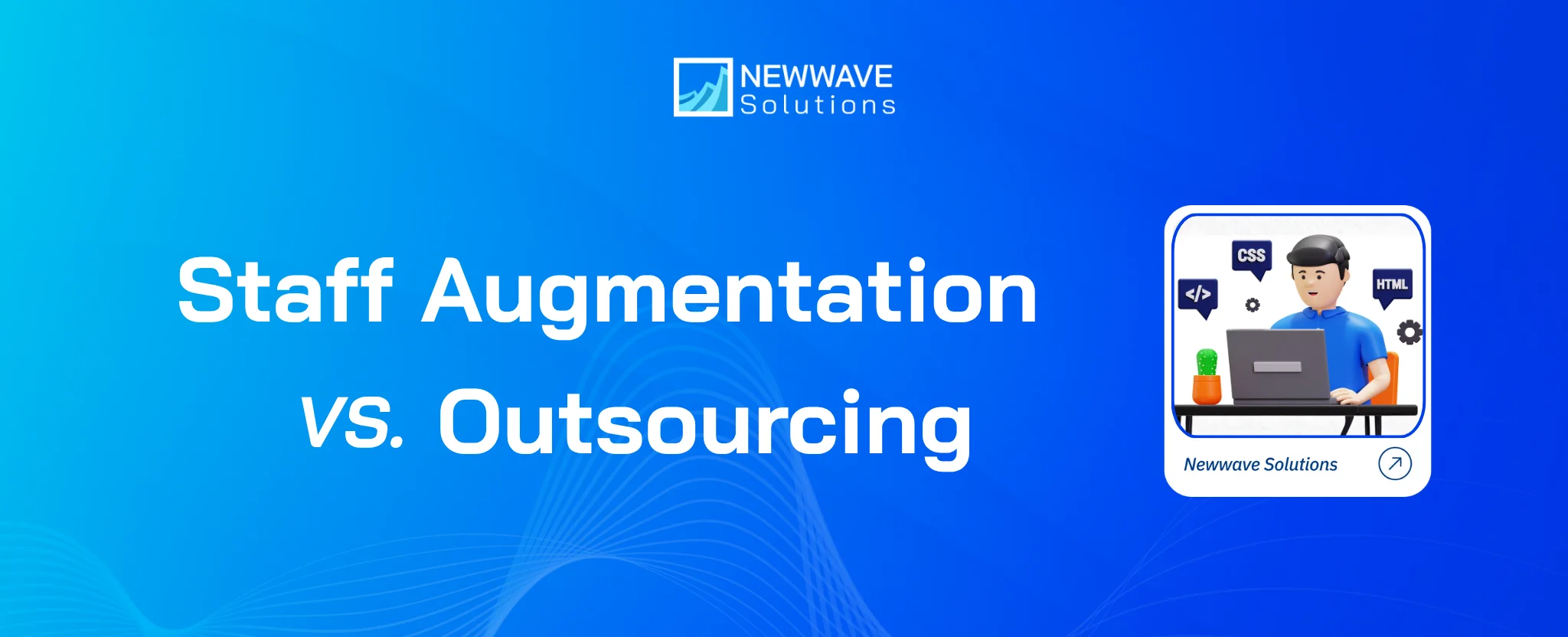
Leave a Reply